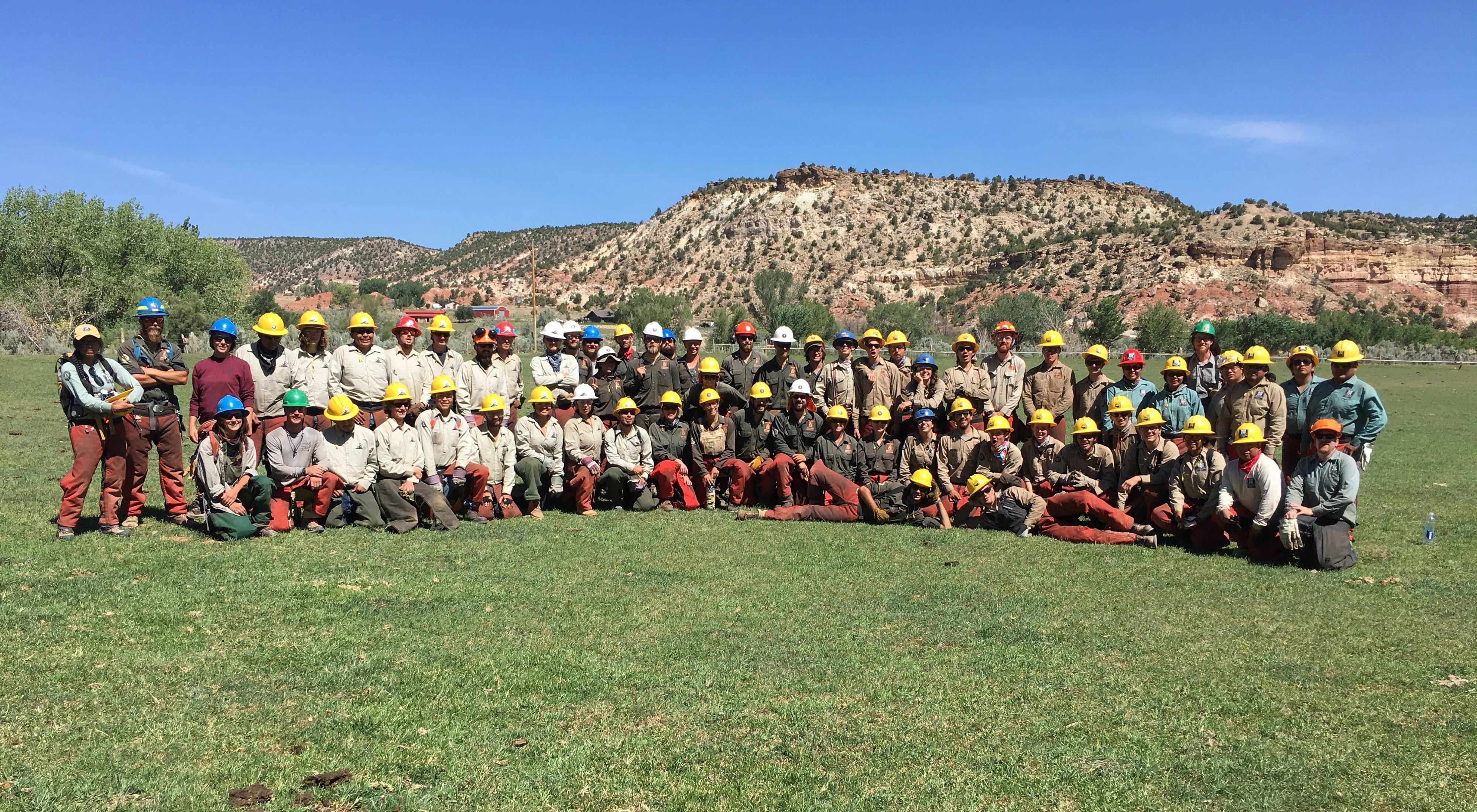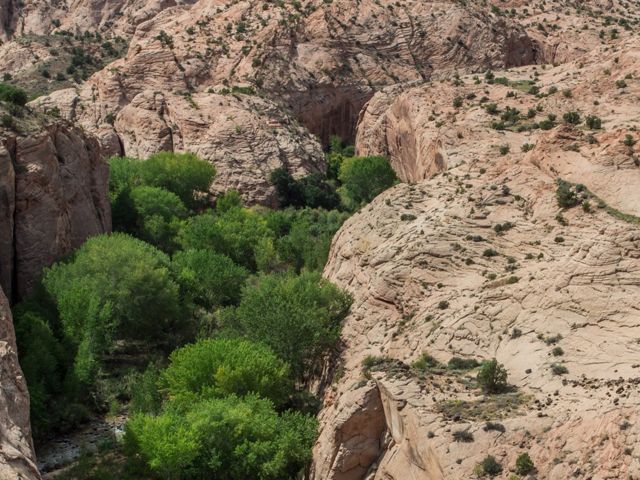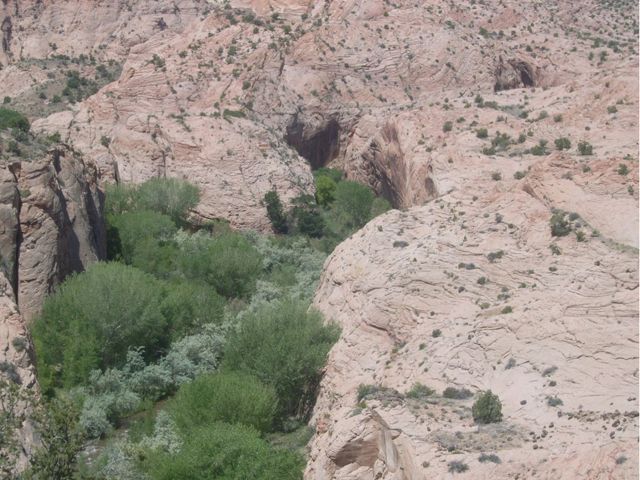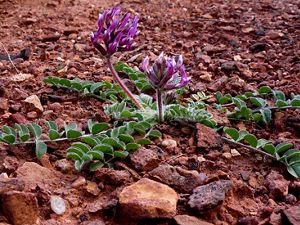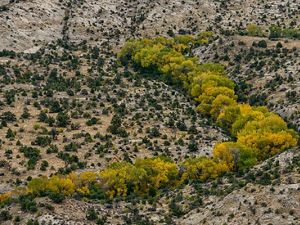The Power of Many: Restoring the Escalante
How extraordinary forces came together to fight invasive species and save one of the last free-flowing rivers in the West.
It was early fall in 2008. A small campfire crackled in the cool night air. Beneath swaying cottonwoods, a group of scientists gathered in a meadow outside the town of Boulder in southern Utah. They were beat. It had been a long day in the field, a “bioblitz” effort to document the native plants and animals of the Escalante River watershed.
Linda Whitham, The Nature Conservancy’s Canyonlands Region Program Manager, and John Spence, a Chief Scientist with the National Park Service, slumped on camp chairs, reviewing the day’s finds. The watershed’s biodiversity was rich and exciting, but the scientists had noted something else as well—something alarming.
Quote: Linda Whitham
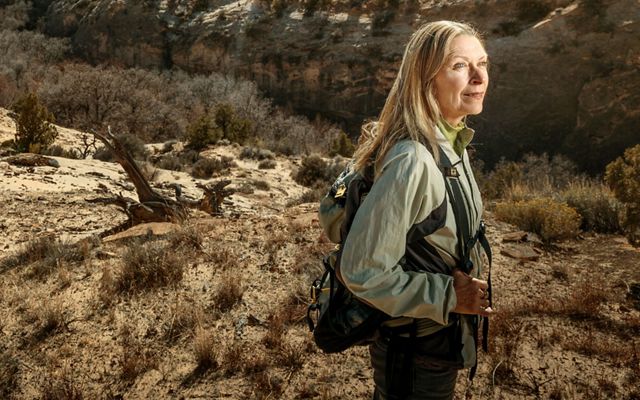
I’d describe the Escalante Watershed as a tremendously diverse oasis in the midst of this vast arid region. It’s a strikingly beautiful and ecologically important place.
“We started talking about the one issue that worried all of us,” recalls Whitham, “the spread of Russian olive and tamarisk throughout the watershed. It just felt like a runaway train.”
She wasn’t exaggerating. Along the Escalante, a tributary to the Colorado River, these invasive plants were outcompeting native vegetation, obstructing water flows and reducing wildlife habitat. In a spectacular region treasured by locals and visitors alike, access to the river was quickly deteriorating.
As the fire dwindled, Spence and Whitham pondered an idea. They’d noticed other watershed restoration efforts starting to pop up in the Colorado River Basin. Could it work here? In a region filled with vastly different land uses and interests, could enough people agree on one vision for the entire watershed? And, perhaps more daunting, could they coordinate well enough to make any real headway against the aggressive invasives? Spence and Whitham didn’t realize it yet, but their campfire chat had sparked something big.
Fast forward a decade: this year the Escalante River Watershed Partnership (ERWP) is celebrating the restoration of 90 river miles—a massive coup for the watershed’s health. As Western rivers face a growing crisis, the ERWP’s success story reminds us that people—united by nature—can deliver hope.
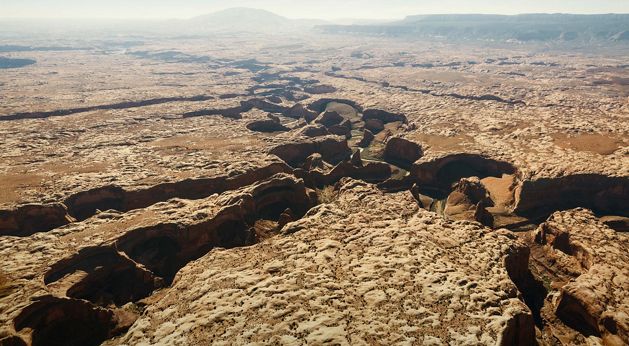
We Can’t Save the Escalante Without You
Sign up to receive monthly news and stories about our conservation progress. Get a preview of Utah's Nature News email.
Rugged, Remote and Vital
One of the last rivers to be mapped in the lower 48 states, the Escalante runs 90 miles through south central Utah and into Lake Powell, winding through Navajo sandstone canyons and feeding a network of springs and hanging gardens. The river cuts through a patchwork of public and private lands, including the Grand Staircase-Escalante National Monument, and curves near the towns of Boulder and Escalante, supporting communities and sustaining a wilderness cherished by residents and explored by tourists from around the globe. From recreation to agriculture, the Escalante fuels livelihoods and delivers a quality of life that matters to many people.
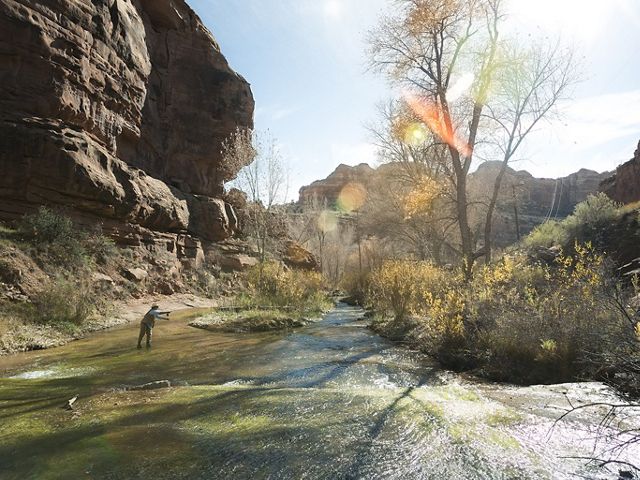
For the region’s plants and animals, the Escalante is life itself. The watershed’s great range in elevation—dropping more than 7,000 feet over its course—makes for rich biodiversity. More than 200 species of migratory birds, including the at-risk Southwestern willow flycatcher and yellow-billed cuckoo rely on the river’s riparian habitat. The spotted owl and peregrine falcon hunt and nest along its course, and the threatened Colorado River cutthroat trout swims in its higher elevation tributaries. The lower mainstem supports the at-risk bluehead sucker, flannelmouth sucker and roundtail chub.
Invasive Species on the Banks
By 2008, the Escalante was a river under increasing stress. Like many waterways throughout the American West, a combination of changes had pushed it toward a dangerous tipping point. The invasion of Russian olive and tamarisk, however, was the real red flag. The thorny thickets grow fast—and set deep roots—crowding out native cottonwood trees and willows.
John Spence was already unpleasantly familiar with the scourge of Russian olive from his work in Glen Canyon National Recreation Area, at the lower end of the Escalante watershed. “In the 1980’s the highly invasive tree from Eurasia rapidly invaded the Escalante River corridor, fundamentally altering the structure and function of the riparian and aquatics ecosystems,” explains Spence. “Land managers realized there was an urgent need to combat the invasion before there were irreversible changes and loss of biodiversity.”
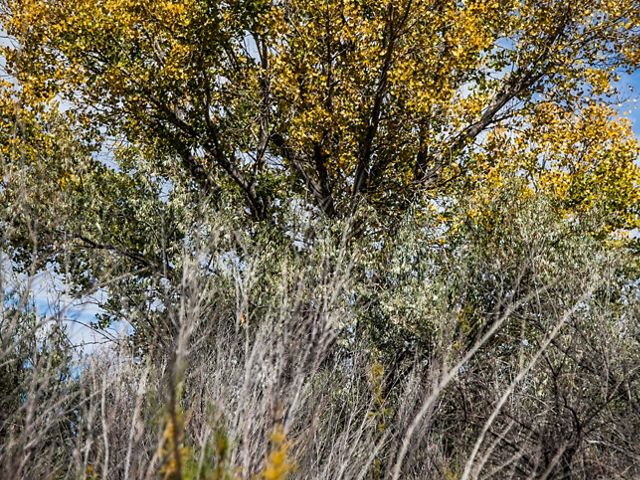
Despite extensive control efforts by the National Park Service and Bureau of Land Management, Russian olive was crippling the Escalante watershed, and even re-invading previously cleared areas. To make matters worse, other pressures started to mount for the river. Reduced snowpack and changing runoff patterns, as well as increasing demands from a growing population, began to threaten flows. Already no stranger to drought, southern Utah faced predictions of hotter and drier years ahead.
Partners Gather to Strategize
The importance of the Escalante to humans and nature, and its growing jeopardy, proved a unifying force. What Spence and Whitham had discussed at the campfire—the river’s need for a large, coordinated intervention—began resonating with a lot of people. Spence wrote a grant request to the National Park Foundation to host an initial planning meeting.
“At our first gathering in June 2009, we crammed about 20 stakeholders into a small meeting room in the old community center in Boulder,” Whitham remembers. “We had great discussions with people from all different walks of life—local residents, public land managers, scientists, conservation groups and recreation guides—everyone was involved in some way with the watershed.”
Quote: John Spence
Land managers realized there was an urgent need to combat the invasion before there were irreversible changes and loss of biodiversity.
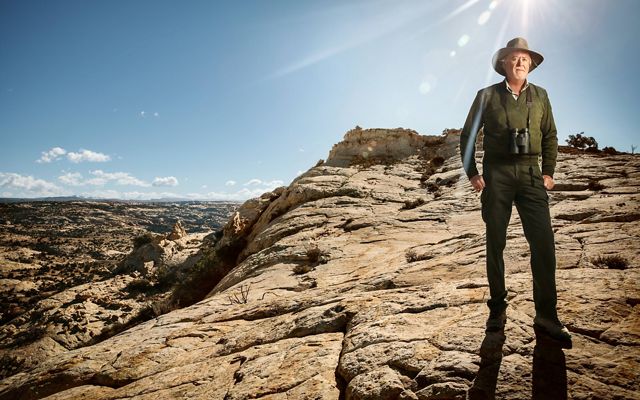
Towards the end of the lively session, the room’s walls entirely covered with sticky notes from the brainstorming, Whitham remembers a moment of reckoning. “We went around the room, and asked point blank if people were really willing to commit, and to tackle this river together,” Whitham says. “And everyone in that room gave a thumbs up.”
Spence underlines the significance: “That moment was a crossroads. Not only did we form the partnership, but that very day we also crafted our mission statement.” The Escalante River Watershed Partnership was born. The vision was simple but audacious: re-establish a healthy and sustainable watershed.
Science and Sweat: Launching the Plan
Despite the energy, early on the ERWP faced a sobering reality. Spence sums it up: “We needed to integrate invasive species control work, conservation planning and management, science, sustainable development and education and outreach across about one million acres of public and private lands.”
It was a tall order. Each partner brought something unique and powerful to the table. Spence, with the National Park Service, and Whitham with TNC, helped establish and maintain the partnership’s initial structure. One of TNC’s key contributions: our patented conservation action planning process, which created ERWP’s 10-year Action Plan. Grounded in science, the 10-year plan enabled partners to assess conditions, identify priorities and organize actions to meet realistic goals.
Other partners such as BLM, Utah Division of Forestry, Fire and State Lands, Utah Partners for Conservation Development and the USDA Forest Service stepped forward with early support. Crucial seed funding came from the Walton Family Foundation, which remained a core supporter, sustaining the ERWP for years to come. On the ground and in the community, Grand Staircase Escalante Partners took a lead role in organizing invasive removal and restoration.
Engaging Local Youth Conservation Corps
“In retrospect, launching the plan might have been the easier part,” laughs Whitham. “The actual removal of the invasives has been painstakingly difficult.” Much of the restoration was conducted by local youth conservation corps—millennials with hardy backs and heavy equipment—who immersed themselves in the Escalante watershed’s rugged beauty, gaining work experience and a new perspective on nature. Volunteers for the removal effort streamed in from far and wide, many from groups such as Sierra Club, Great Old Broads for Wilderness, Vanderbilt University, and Wilderness Volunteers.
“One of the most rewarding, yet challenging pieces of this project on public lands is the remote nature of this landscape. Worksites along the Escalante River are miles from roadways. Crews hike many miles one-way into the back county carrying equipment and personal gear to work for up to eight days at a time on this project. We also hire local horse-packers to haul heavy gear to and from worksites throughout the fall season. It’s a huge undertaking, but through everyone’s commitment, we’ve all been able to accomplish unprecedented goals for a restoration project of this scale in the west.” says Stephanie Minnaert, former Public Lands Program Coordinator with Grand Staircase Escalante Partners.
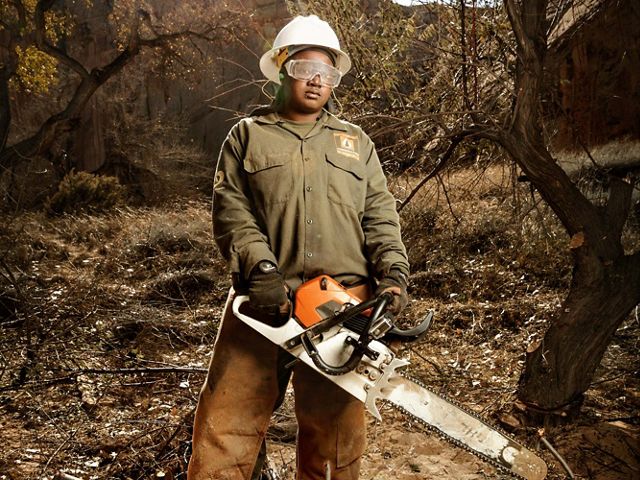
Gaining Momentum
It wasn’t long before the results of the ERWP’s strategic thinking and hard work began to show. By 2015, the ERWP had restored more than 64 river miles, taking down dense infestations of Russian olive on over 4,000 acres, and monitoring the impact of this large-scale removal. Partners had reestablished native fish species to 17 miles of historic habitat and reconnected or improved over 50 miles of fish habitat.
The results were tangible and visible. The river began to respond to coordinated care delivered by hundreds of conservation corps members and volunteers.
Local communities reaped the benefits too. The activities of the ERWP have created jobs, generated tourist revenue, and formed new markets for the sale of merchandise made of Russian olive wood. And, most importantly, more and more people got involved.
A Citizen Science Program with Utah State University enlisted local residents—from landowners to high school students—to collect river samples and assess water quality in their own backyards. At the Escalante Canyons Art Festival in 2016, the ERWP hosted a plein air competition in the canyons, where artists created works that inspired but also raised conservation awareness.
Quote: Linda Whitham
The partnership matured in key ways. The EWRP became a powerful nexus for people, from very different walks of life, to channel our energy toward a sustainable watershed.
A River on the Rebound
Today the statistics of the ERWP’s work speak for themselves:
- Restored native fish species to over 30 miles of historic habitat
- Reconnected or improved more than 80 miles of native fish habitat
- Engaged more than 190 local landowners to improve riparian areas
And of course, the big one: 90 river miles of Russian olive removed—encompassing the entire main stem as well as tributaries to the river.
The ERWP has grown to include 20 official partners and employs several staff. While reaching the restoration goal is an historic mile marker, the group is not resting on success. The ERWP is pursuing targeted revegetation, re-treatment and monitoring efforts to ensure the invasives remain at bay. Scientists are launching new studies on springs and seeps as well as fish and wildlife to combat the impacts of climate change. The ERWP is also broadening community engagement programs and enlisting more residents and visitors to play a part in the story of the Escalante.
For Whitham and Spence, now many years removed from that auspicious fireside chat, the journey to the 90th mile has been both challenging and deeply gratifying. “I believe this is one of the most ambitious and comprehensive invasives removal projects to be undertaken in the intermountain West,” shares Whitham. “Because of the perseverance of so many, the river is slowly returning to its natural state and improving habitat for fish and wildlife.” Spence credits their success to a few key elements: “we developed a solid action plan, had strong leadership and engaged with the local communities early.”
“But most important,” he says: “we had a powerful rallying point: we had the river.”
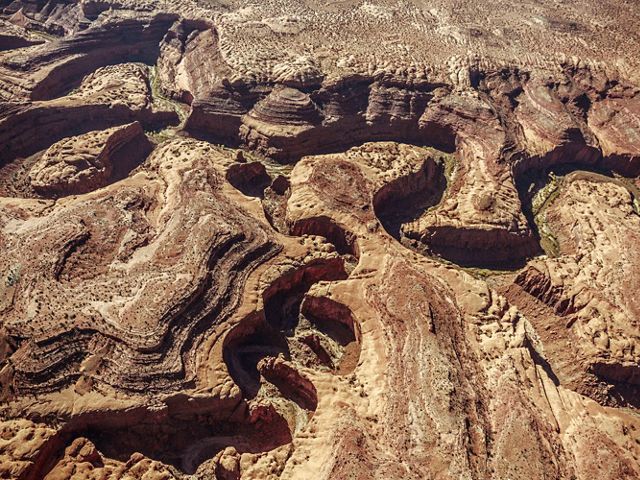
Help Us Continue Momentum on the Escalante
Support TNC’s important work on this and other threatened rivers in Utah.
Donate Now